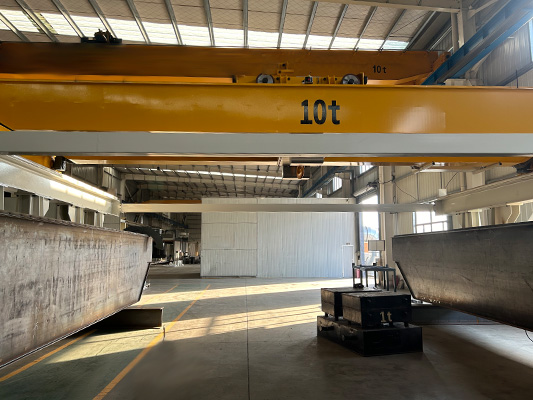Maintenance for Bridge Crane Mechanical Component
A double girder bridge crane is a type of overhead crane with two parallel beams that provide increased lifting capacity and span compared to a single girder crane. It is commonly used in general industries that require heavy lifting.
For the general industry bridge crane, maintenance is required to ensure safe and efficient operation. For the mechanical components, regular maintenance helps identify and address potential issues before they lead to accidents or breakdowns. It helps extend the lifespan of the crane, reduces downtime, and ensures compliance with safety regulations. Meanwhile, proper maintenance also helps optimize performance, minimize costly repairs, and maintain productivity in material handling operations.
Following are some safety technical rules that must be complied with when using cranes;
• There should be personnel who have been trained to operate the crane to operate the crane.
• On the side of the crane, there must be a sign indicating the maximum lifting capacity, span, work type, and manufacturing plant of the crane.
• When the crane is working, it is forbidden for anyone to stay on the crane or trolley.
• When inspecting or repairing on the crane, the crane must be powered off.
• When the crane is carried out without load, the hook must be raised, at least beyond the height of a person.

• It is not allowed to throw items from the crane by any means.
• It is not allowed to cross over the head when lifting heavy objects.
• It is forbidden to transport or lift personnel with hooks or on heavy objects.
• When lifting liquid metal, harmful liquid and important items, no matter how much the weight, it must be lifted slightly, 150-200mm from the ground, and then continue to lift after verifying the reliability of the brake.
• It is forbidden to store flammable materials (such as kerosene, etc.) on the crane.
• If the crane is used in the open air, when the power is greater than level 6, the work should be stopped.
• When the open-air crane is not working, the crane must be reliably fixed to prevent wind damage.
• Tools and spare parts must be stored in special boxes, and it is forbidden to scatter them on large carts or small carts to prevent them from falling and injuring people or objects.
• The wire rope should be inspected on the surface and its fixings at each shift, and a detailed inspection should be made every 7-10 days.
• Within 12 months, a regular safety technical inspection of the crane must be carried out, in addition to the detailed inspection of the components, but also with a test hammer. Perform a static load test.
We want to hear about your project and answer any questions you may have. Contact us today at +86 133 9069 2151 OR email to sale@kfqizhongji.com

